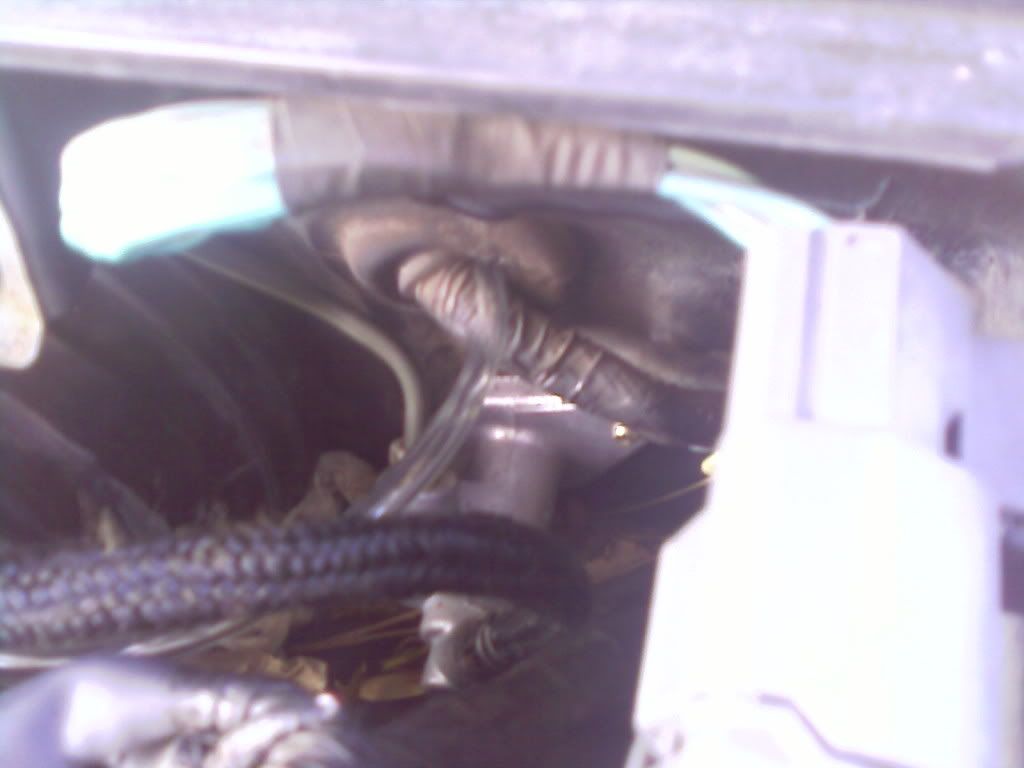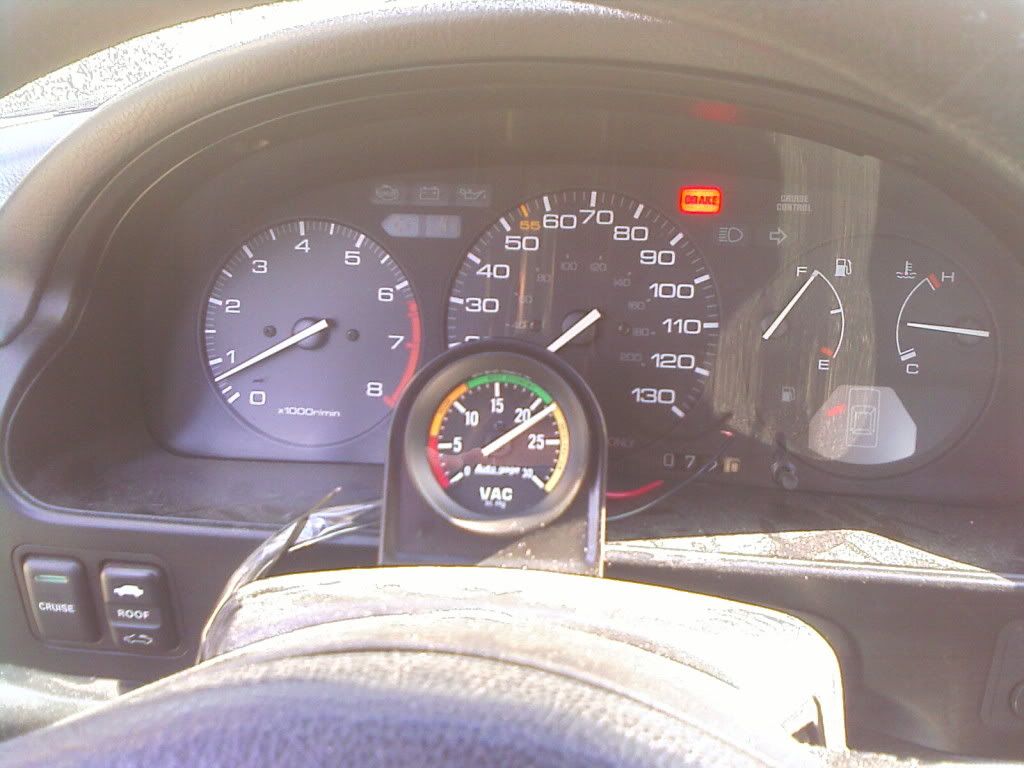I had 10 spare minutes last night and access to a warm warehouse, so I drove my Accord up the ramp and inside to do a quick jury-rigged install of my vacuum gauge. I used the Auto Gage 2 1/16" gauge. I prefer the full-sweep motion, and I never plan to turbocharge the car, so a boost side is wasted on me. I also like this gauge because it's 100% mechanical, so I didn't need to do any wiring to start using it right away. The red/yellow/green zones also give me an easy indication of how I'm doing, allowing my eyes to spend more time looking at the road ahead.
Tools needed: zip ties and a "grommet pen":

This is one of those chintzy "executive desk" pens, which I found laying around, already starting to rust. The vacuum line included in the kit slips snugly onto the pointy end (left), and the writing end (right) was used to poke through one of the main wiring boots:

Sorry about the poor picture quality. I don't have a "real" camera, so this is done with a cell phone camera. Here you can see one of the main wiring harnesses, right above the new master cylinder, and the Warm Air Retention System.. er, buildup of leaves. The pen slid through the boot easily, and the vacuum line stayed on the stabby end. Once the pen was through, I could pull the rest of the line through.
Next step was to cut into a vacuum line and install the included 'T':

I chose the line that came directly off the throttle body. One thing I can say about the PGM-FI engines--there's a lot of easily accessible vacuum to go around.
Finally, the interior side:

There was just enough line included to reach from the throttle body (middle-right of the engine compartment) through the boot (above the master cylinder) and up to the steering wheel. I zip-tied the gauge to the cover through its mounting holes. Since I plan on putting in a gauge pod (along with a 'real' temperature gauge), I didn't want to drill any holes.
This picture shows my warm idle--about 21.5 in. 62 mph on the flat runs about 15 in., which makes things easy: if the needle is to the left of pointing straight up, I'm using more throttle than 62 mph flat, and to the right means I'm using less.
I'm amazed at how quickly the gauge moves. I didn't realize just how little foot movement it takes to go from the middle of the green zone into the yellow zone. I can also easily tell when there's a headwind, as maintaining 55 mph through a flat windy area brought the gauge down to about 10 in.
Some other notes:
1. My cold-start idle (38 degrees) was at about 15 inches instead of the normal 21 inches. This coincided with the higher idle, and didn't completely go back to 21 inches for many miles. Maybe a block heater is in order for the winter months.
2. The A/C brings the vacuum down about 2 inches at idle, or about 1 inch while cruising. Seems like a significant difference.
3. If I'm coasting downhill, turning off the engine increases the vacuum somewhat (from 22 to 26 inches, for instance.) I think this means that I don't have DFCO on this car (it's a '90), so a kill switch might make a big difference.
4. I'm trying to work out the best way to climb the hill home. It's about 15 miles, with a 4,000 foot gain. I do about 42 mph for most of it, and the gauge reads 3 in. in 4th gear, and about 10 in. in third gear. Anybody with more experience who can tell me which is better for FE? This is the biggest killer of mileage in all my cars.